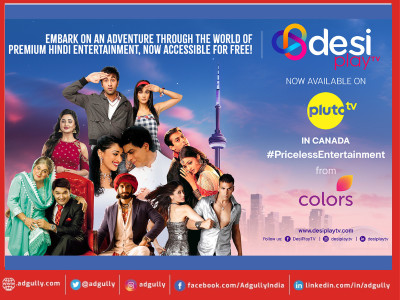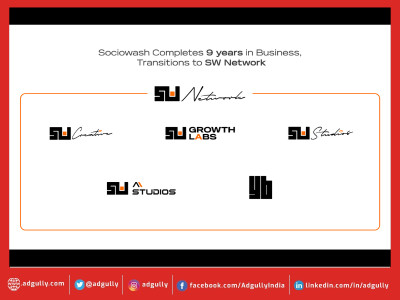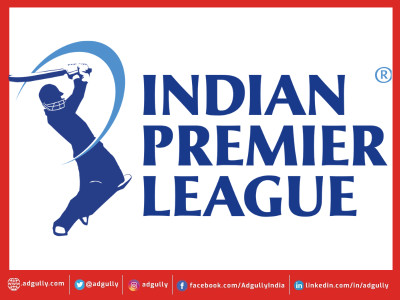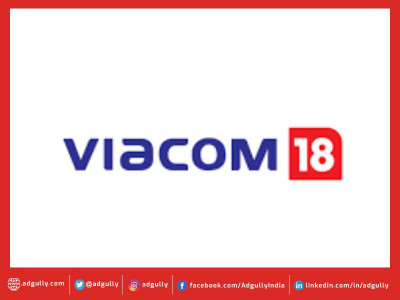Saugato Bhowmik chalks out growth strategy for Viacom18 Consumer Products
Viacom18 Consumer Products is a significant player in the ever growing consumer products space with its diverse portfolio. Through various associations, Viacom18 has cut beyond the conventional categories, giving the consumers a slice of its brands such as MTV, Vh1, Nickelodeon, Comedy Central, along with a growing portfolio of acquired third party brands.
Viacom18 Consumer Products showcased its product portfolio at the India Licensing Expo 2018, held in Mumbai on August 23 ad 24. Organised by License India, the brand licensing centric media division of Franchise India Group, India Licensing Expo offers a unique proposition for the budding licensing fraternity to apprise themselves on the concept of licensing as business module, and explore exhibited licensing opportunities in multiple product categories.
In conversation with Adgully, Saugato Bhowmik, Head - Viacom18 Consumer Products & Integrated Network Solutions, speaks at length about the merchandising business in India, the factors contributing to its growth, developing Viacom18’s consumer products business, the road ahead and more. Excerpts:
How much is the share of Viacom18’s business in the Consumer Products category?
At present there is no independent report to measure market share, unlike other industries where there are published monthly reports or quarterly reports. But our understanding, from market intelligence and all the triangulated information that we get from retailers, licensers, and our competitors is that we are now No. 2 in the market after Disney. Of course, Disney is a much larger and much older business, but our understanding is that we are No. 2 in terms of revenue and number of categories and number of brands put together.
How do you promote the various merchandises in the Viacom18 portfolio?
We use our TV networks and digital networks, so it’s selective. Besides, we have more than a hundred licensing arrangement across all our brands. As all the products can’t be promoted, we select those which are core and which are strategic to the brand. Then we put that on TV in the form of promos or pre-rolls and mid-rolls and on digital. We also look to promote through the sellers. The biggest challenge is to drive discoverability of our brands on e-commerce platforms. As it is a key issue, we work with our sellers to understand how to become more discoverable in terms of the service level, user reviews and in the way they market. They need to market themselves a lot more than say an Amazon, Jabong, or a Myntra. This is a multi-pronged approach that we work on to ensure discoverability. One needs to get discoverability going as it’s a challenge; the business is horizontal and the Indian retail market is very fragmented. You can’t just tie up with three or four large size retailers and say I’m going to do some major activation. It doesn’t work like that.
We have sliced and diced into many categories and many brands across many retailers and therefore, the scale doesn’t exist to do massive advertising programmes. We have to be selective and clever about it.
How has the response been in the Indian market to branded merchandise?
It’s still early days, as this industry is primarily still concentrated in the top six metros of India, even though it is beginning to filter into the smaller towns through e-commerce. Licensed merchandise is about disposable income, they are more expensive than the unbranded, commoditised products. The consumer will have to fork out more money and that in itself makes the market a bit narrow and not deep. So, it’s going to take time. It will be a combination of many factors which will gradually change the industry. One is the increasing growth of e-commerce. Also, as the macroeconomic conditions improve and if we have three to four years of sustained growth, there will be more disposable income in the hands of consumers and they will be more likely to spend. We need to promote a lot more using our TV and digital assets and make our licensing much more front and center. We need to tie it up with other assets that we have; for example, can I gratify on my live entertainment business through merchandise; can I put merchandise and products contextually in the middle of our program on digital. So, all these things put together will gradually grow the industry and we are invested in growing the industry.
How do you view the emerging Indian licensing industry and what are the factors that drive its growth and the challenges that will be face?
Local Indian animation is something Nickelodeon is doing fabulously. I think they are most successful in this space and in the last two years we’ve had ‘Motu Patlu’ explode on the screen. ‘Shiva’ and ‘Mr. Rudra’ are also doing extremely well. You see other players also bringing in local animations as local flavour is the new mantra. Now, with a bit of lag-time, it will start to create enough traction or merchandise as well. When something becomes popular in mass media, it takes a couple of more years to get the merchandise programme running. First, you’ve got to become popular, then you’ve got to start feeding the market and gradually it becomes adopted at a much more vast level. I see good times ahead for Indian animation and licensed merchandise. But at the same time, what has to be kept in mind is that some of the merchandise is also about buying something, premium.
It is one thing to see a brand on TV and another to want to wear it on you. Popularity on TV and popularity in merchandise are two very different things. For example, FC Barcelona is a brand we merchandise in India, a very premium sports brand and arguably one of the most popular sports license brands all over the world. Now, there is no TV content for them except for the matches, but it’s legendary and it charges a huge premium in the market for its merchandise. On the contrary, take something as mass and hugely popular as IPL – how many T-shirts of Mumbai Indians do you see sold? There is no fixed approach, it’s a mix and match approach and there will be hits and misses. Every popular TV show will not have a licensing programme and vice versa.
What are your expectations from a platform like the India Licensing Expo?
We are one of the leading licensing businesses in the country. I think it’s absolutely important that we are present to support the India Licensing Expo and we are present to meet the retailers and prospective licensees. It is a small industry which needs support. There are more and more manufacturers, retailers, distributers who need to be brought into licensing and develop the industry further. More and more such events need to happen and we need to partner, otherwise we will remain small and invisible. That is our intention and goal for being present here.
The biggest menace to merchandising is counterfeit products. How are you tackling this?
The key differentiator is the product quality, which cannot be matched by the counterfeits. We choose our partners after due diligence to ensure that the product quality is premium. A discerning consumer will know if it’s a fake and over a period we follow a policy of pricing ourselves aggressively; bringing in the mass ranges to start mopping up the cheaper counterfeits. Counterfeiting is primarily taking something that is selling at 100 bucks and selling it at 20. On the flip side, however, counterfeiting is a sign of the popularity of that brand. This apart, the legal teams are also constantly working towards ensuring that counterfeiting issues are addressed.
What is the best way to target millennials vis-à-vis kids who tend to be more brand loyal?
Millennials are altogether a different ball game and that’s why we are taking a more calibrated and selective approach to it. We are looking at this as a lifestyle play, where we slowly and steadily getting into the market. For us, our brand is MTV and Roadies and we need to be sure we are in the right category with the right partner and the right product quality, because millennials today have way too much choice and too much exposure to brands, both Indian and international, for them to be persuaded by anything that is licensed. The fan level or cult followership is at Marvel standards, that’s what the millennials are following. We have to get our brands there and bring in that quality in our products for us to be able to capture that market. We are taking our time to get there. Our strategy is to get into more experiences on the youth side, the millennial side, and not only just products.
The kids market is very simple. We are already very successful. We are going to drive more category penetration more distribution, better retailer partnerships and ensure that we are supported on TV and digital. It is a simple game plan and I think we are doing very well at it.
Where do you see this division headed in the next five years?
I think it’s going to be a lot larger in terms of revenues. A lot larger, because our growth is in very aggressive double digits and we have many more brands and categories. We are also looking at experiences. We’re going to have many more retailer partnerships. So yes, the future looks bright as far as I can see.

















Share
Facebook
YouTube
Tweet
Twitter
LinkedIn